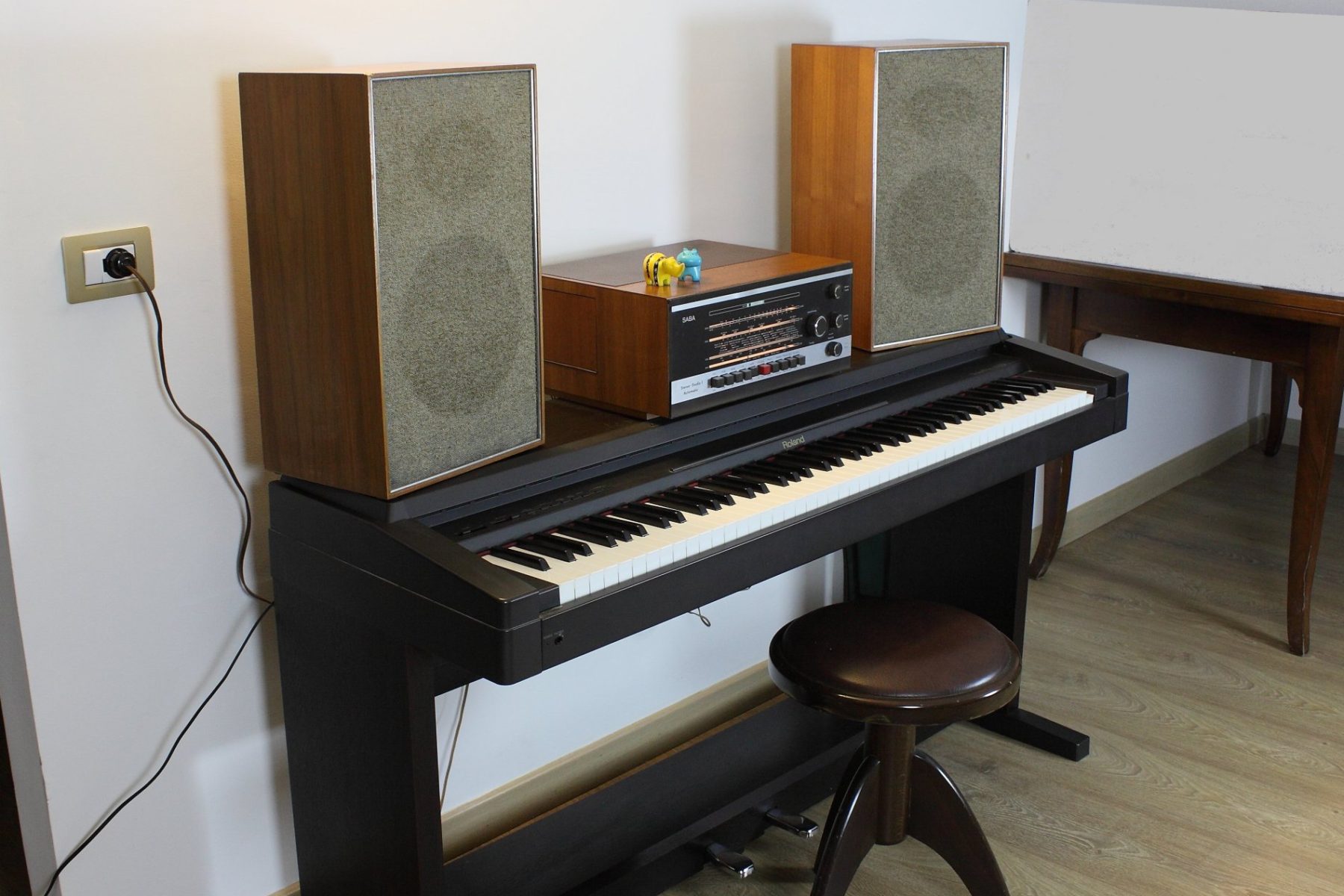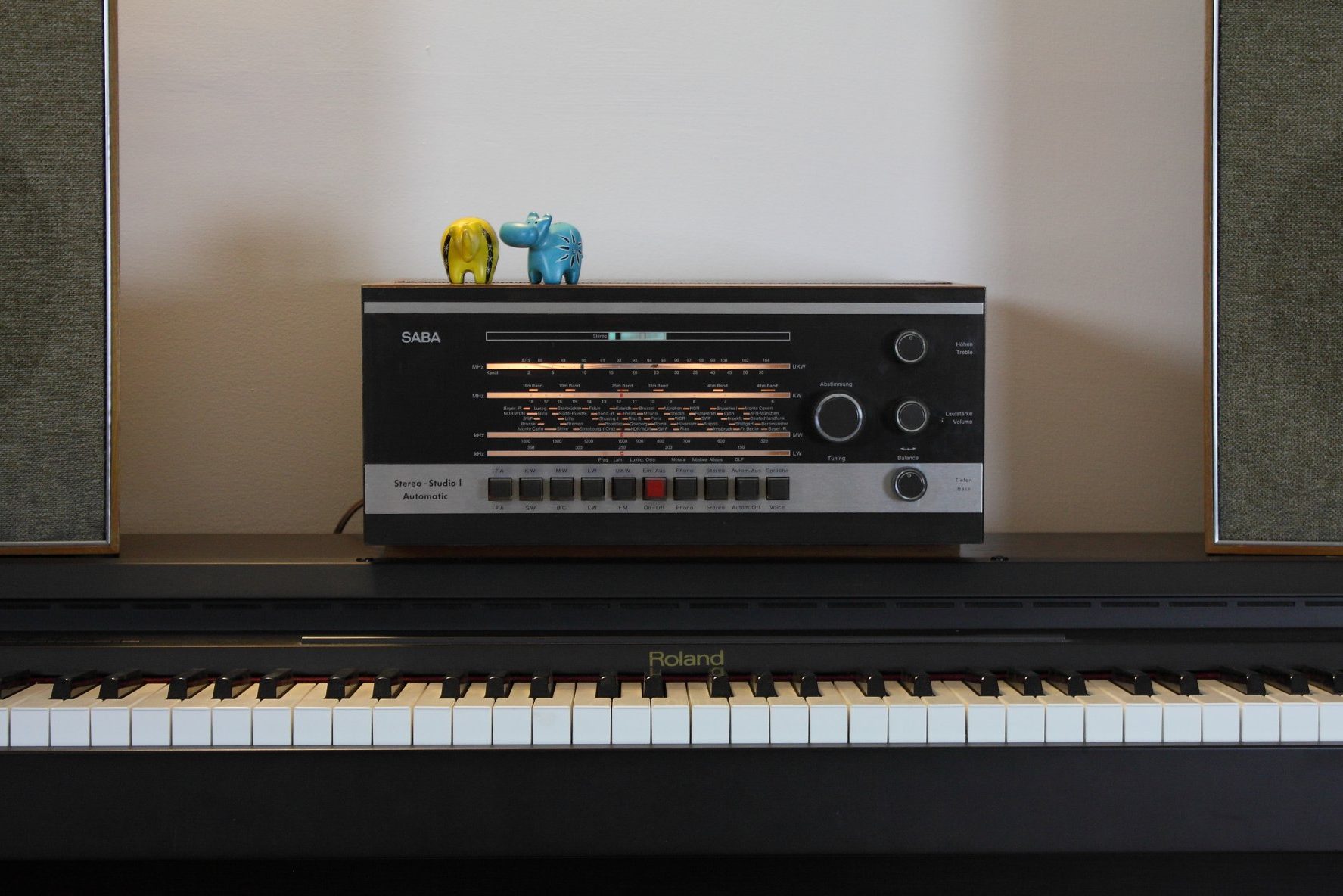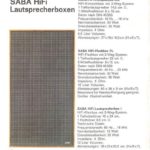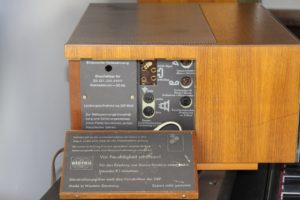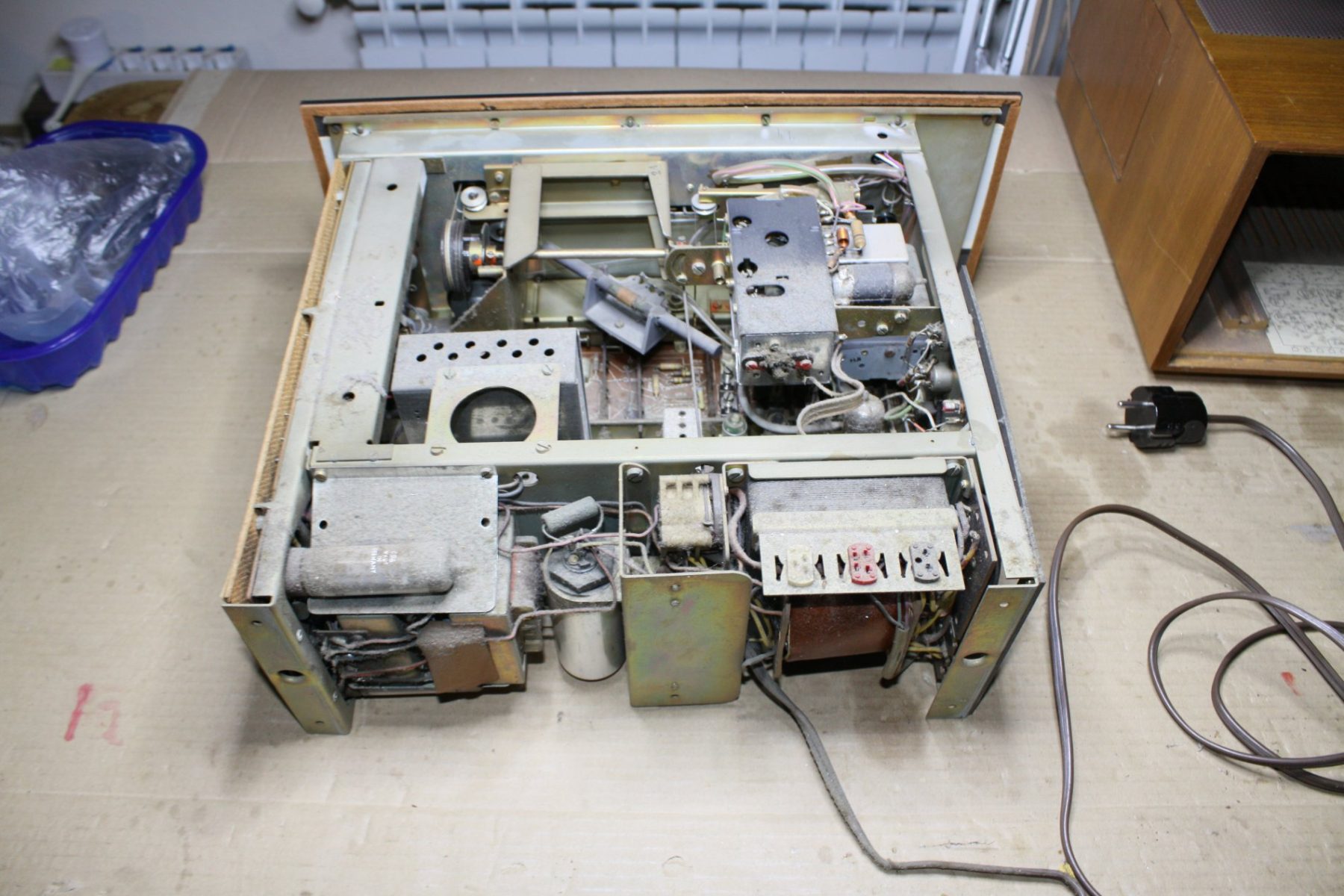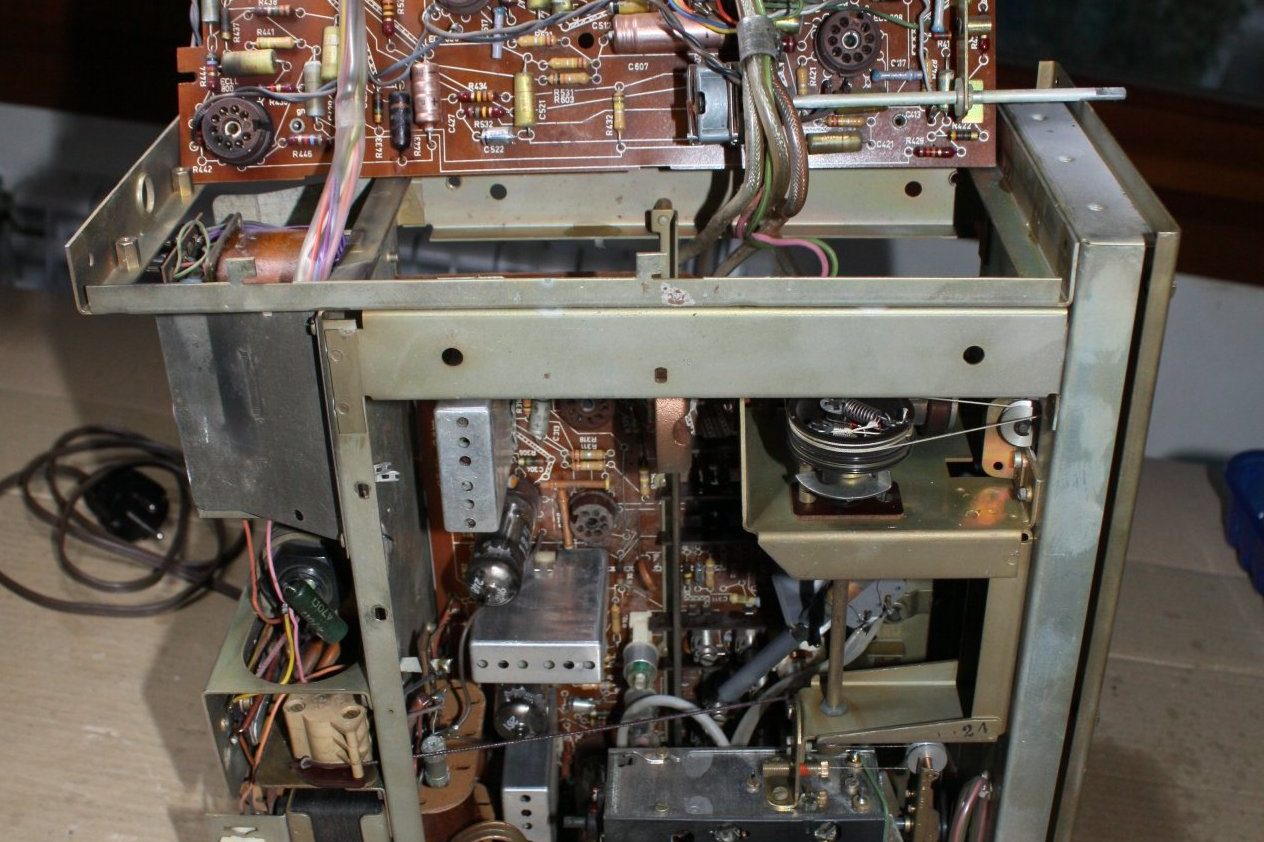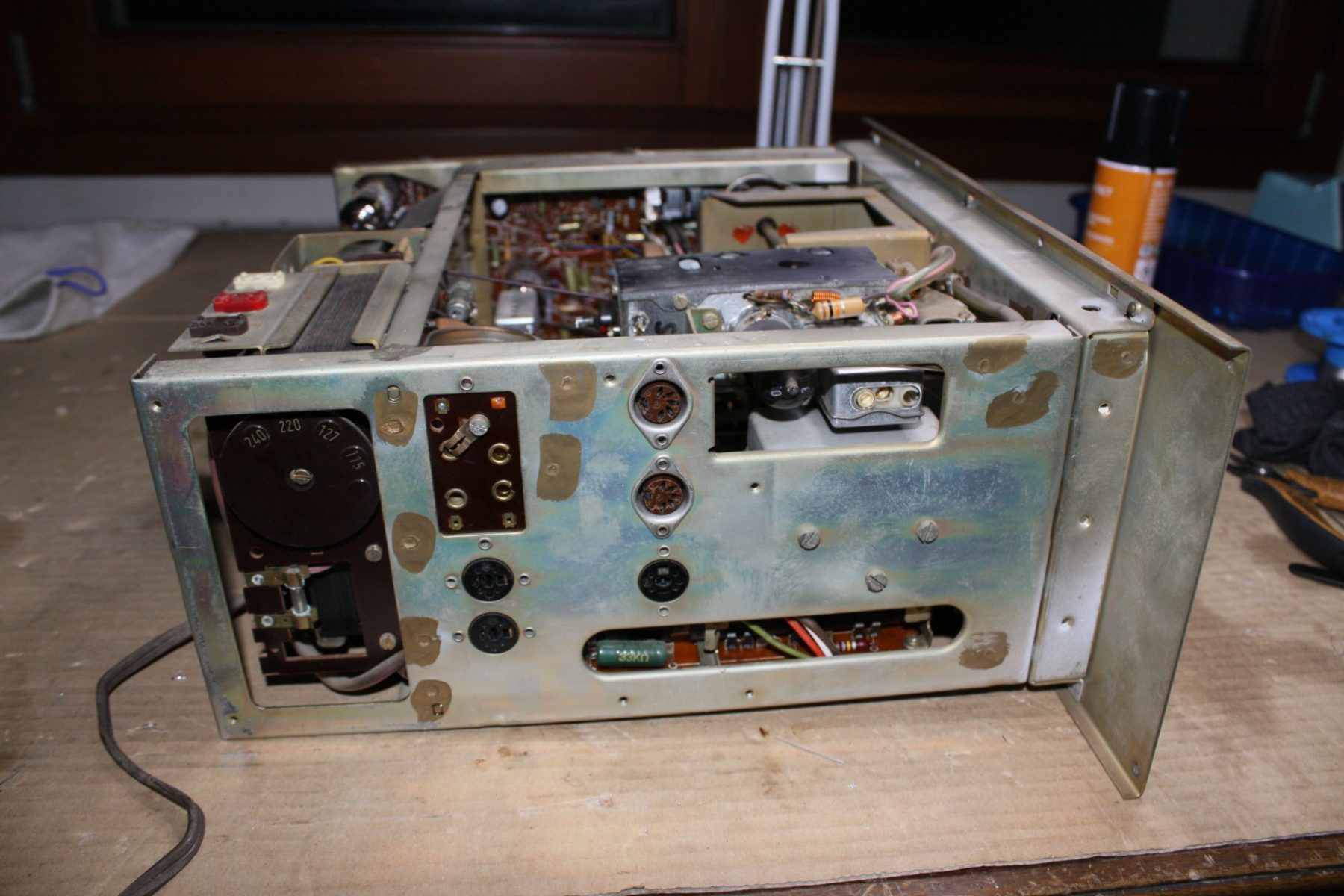 german radios - en
german radios - en
Saba Studio I Automatic – en
- by giovanni
SABA STUDIO I AUTOMATIC
SABA STUDIO I AUTOMATIC
Saba Studio I is the latest Saba receiver built entirely with tubes, apart from the multiplexer. The next devices will have tube tuner section but solid state amplifier stage. A few years later the devices will be completely solid state.
This receiver constitutes an element of break in Saba's production. It sanctions the transition from a design that had remained unaltered from 1953 to a modern, essential and functional idea of industrial design.
The classic canons in the front panels of the German receivers are abandoned, like the windows with the tone controls indication, the tone knobs placed on the keyboard, the knobs symmetrically arranged on the sides of the dial glass etc.
The commands are grouped in the right side of the front panel. They are essential and simple to understand and use. They are also simple to build, which leads to a reduction in the risk of failure.
All the following devices will adopt this rationalization of the front, whose design philosophy will remain valid until the introduction of touch-control displays.
A second break with the past is the engineering oriented to the compaction of the elements.
Everything on this machine has been designed to reduce its size. This is a result that is difficult to obtain on a top range device.
Unfortunately, the restoration of this device was particularly complex due to the need to dismantle many components and entire schede in order to access the circuit sections in question.
The final stage uses excellent ECC808 double triode as preamplifiers and ECLL800 double pentode and triode as final tubes.
Also the radio section uses all multiple tubes, in order to contain the overall dimensions.
The Automatic Frequency Control is very efficient, in fact the frequency stability of this device is well known.
The sound is sweet and well defined, especially thanks to the large output transformators that do not saturate even at high levels of listening.
But the most important advantage is the use of separate loudspeaker boxes. First the cabinet is much more compact, and this makes it easier to place it in the room, second because it is possible to pair the device with the most suitable loudspeakers and place them in the most appropriate way for ideal listening.
These possibilities that the receivers offer, including the Saba Studio I, are very important. If well used they can radically change the sound of a system.
I quote the indication I gave in the description of Saba Freiburg Studio A, as I consider it very important.
Do not place the electronics between the two loudspeakers.
In the pictures the receiver is in the middle of the two loudspeakers, are exclusively for photographic needs.
In a real configuration it must be placed on one side.
Listening to music is a total experience and captivates other senses beyond hearing. Try to listen to a track in the dark and then listen to the same track in the light in your home. Also, listen to the same track used as a soundtrack watching a film. Lastly, try to listen to the same track once more watching the video of the concert.
In all these cases, and in many other situations, the brain will detect and develop sound in different ways. It will create different feelings even though we are listening to the same track.
Placing the electronics in the middle of the loudspeakers distorts our perception of the sound.

BLUETOOTH
Bluetooth receiver embed
MULTI PLATFORM CONNECTION
Each radio is equipped with a cable for connection to any digital device.
TUBESOUND IMPROVEMENT
- Bluetooth receiver embed - The unit is equipped with a BLUETOOTH receiver powered directly by the receiver power supply. This makes it possible to control the amplifier from any external digital device as an IPAD, a Smartphone, or a sophisticated multimedia station. So you can hear your preferred web station or your lossesless file without cables on the room. Wireless Receiver can be equipped upon requests.
– Multi Platform Connection – A customized adaptation cable to connect any digital device as Iphone, Smartphone, Laptop, CD Player etc. will be provided with this radio. This special cable suits the different impedances between the modern equipment and the receiver. Furthermore the two stereo channels flow into one without increasing the load to the input unit.
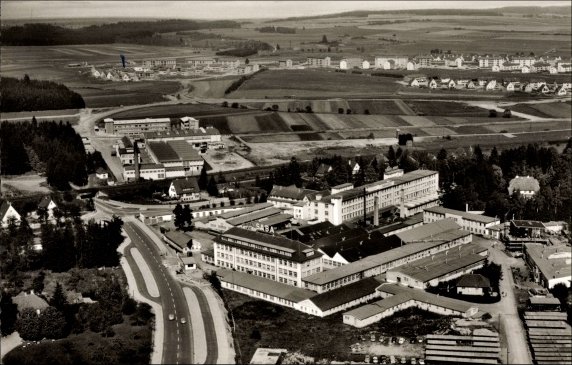

HISTORY
SABA is the acronym for Schawarzwälder-Apparate-Bau-Anstalt meaning engineering institute of Technological appliances of the Black Forest.
The company was founded back in 1835 by Joseph Benedikt with the initial name of Jockele-Uhren, but only in 1923 the production of radio devices began and the company went under the name of SABA.
Toward the end of the 20s SABA became famous with the well-known S35 and in the following years it became the second German producer after Telefunken. During the war SABA produced military equipment and in 1945 the company was completely destroyed by a bombing.
In 1947 the production of radio devices began again and SABA distinguished itself immediately for ist avant-garde and high- quality production.
hey also began to produce TVs (the first PAL color TV is a SABA), house appliances and medical equipment. Many Italians used to work there. The Alnico Greencone loudspeakers became popular for their linearity, power handling, constant impendence that would be employed in each Hi-Fi devices of that time.
The radio devices with motorized tuning became popular as well and SABA became the representative German brand meaning quality, reliability and detailed precision. In the 1970s the decline began. According to specialized magazines of that time not having a Japanese device at that time meant not having Hi-Fi. In the 80s Thompson took over SABA. In the 90s the other way around, having a Japanese device of the 70s meant not having Hi-Fi. They found out that they functioned with a 96% counterreaction and that a device with 0.001 db from 1 to 100 KHz extension did not necessarily sound good.
We do not trust our ears and we do trust what other people say not necessarily with a good purpose.
2007: due to insolvency SABA disappeared from the TLC (Chinese) and Thompson (French) joint venture, and SABA ceased to exist.
MAIN FEATURES
Year of production: 1964-65
Operating voltages: 115; 127; 220; 240 Volt.
8 AM Circuits
11 FM Circuits
Wavebands: Medium Waves (OM), Long Waves (OL), Short waves (OC), FM (UKW)
Output power: 2 x 11W
Stereo-Decoder: Saba E1
Dimensions (LHD): 390 x 180 x 315 mm / 15.4 x 7.1 x 12.4 inch
Net weight:14 kg / 30 lb 13.4 oz
9 Tubes:: ECC85 ECH81 EF89 EBF89 EMM803 2xECC808 2xECLL800

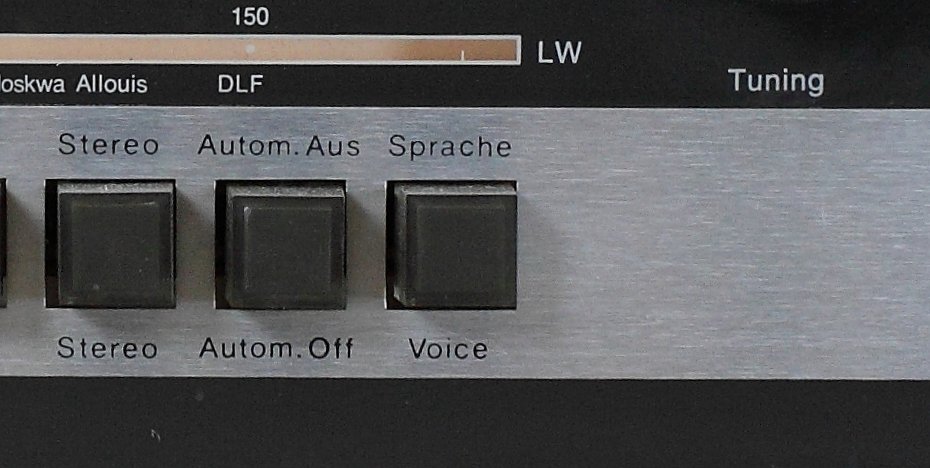
BANDBREITE SCHALTBAR
The correction system of the frequency response is made of one button, SPRACHE/VOICE.
They allow the emphasis of high and low tones while listening to music and of medium tones while listening to spoken programs.
SEPARATE CONTROL TUNING BETWEEN AM AND FM
The device is equipped with separated tuning mechanisms for AM and FM bands and for each of the FM bands.
There is only one tuning knob but the selector changes on a cable and pulley system that are separated according to the band.
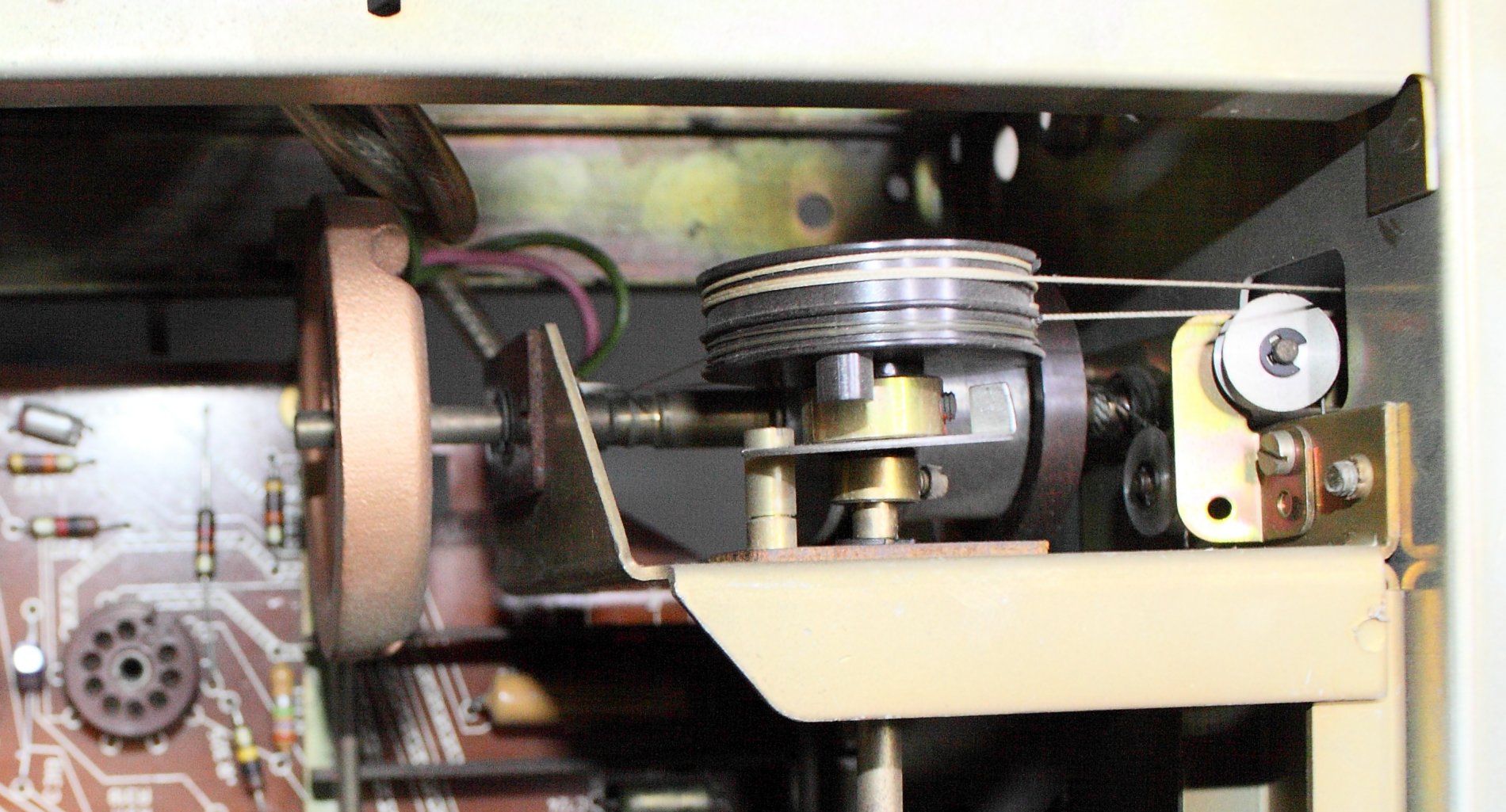

TUNING AND STEREO INDICATOR
The tuning indicator is an EMM803. A tube that is rarely used and rather expensive. It is, in fact, a tuning indicator with a double display.
A section of the EMM803 is used to indicate the correct tuning of the stations.
The other section, the smaller one, is used to indicate that you are listening to a stereo station broadcasting.
MONO/STEREO SWITCH
Most of the radios and receivers do not have a stereo decoder, so listen in stereo is only possible when the phono input is selected.
Saba Studio I Automatic, instead, is equipped with the Saba E1 stereo decoder, so actual stereo listening is also possible in FM.
When pushed, the stereo button allows the listening and reception of FM stations in stereo.
If you are listening to an FM station that is broadcasting in stereo, this button inserts the stereo decoder, and the left and right channels work separately.
If the button is not pushed (mono) the input of the two channels is shorted, then the left and right channels process the same signal.

LOUDSPEAKERS
This unit is equipped with its original speakers and original packaging.
Here a list with the characteristics declared by the manufacturer:
SABA HI-FI Lautsprecherbox I
2 way Infinite Baffle Speaker
1 Tweeter 8x15 cm
1 Mid-Woofer 18x24 cm
Frequency response: da 65Hz a 16 kHz
Average Power: 15W
Max Power: 20W
Impedance 5 Ohm
Internal Box Volume 12 l
Measurements: 36 x 22 x 20,5 cm/14.2 x 8.7 x 8.1 inch
CONTROL PANEL

The keys have an indication of their function in German (line above) and in English (line below).
They have respectively the following functions:
FA - Ferrite Antenna insertion for Medium and Long Waves
KW - Shortwave
MW - Medium Waves
LW - Long Waves
UKW - FM
EIN-AUS - On / Off
Phono - Turntable / Aux Input
Stereo - Stereo / Mono switch
Autom.Aus - AFC insertion in FM (Automatic Frequency Control)
Sprache - Music / Voice switch
On the right side all the controls are placed
The first knob at the top (Hohen / Treble) is the treble one
Below we find the big tuning knob (Abstimmung / Tuning)
At the side you can see the volume knob (Lautstarke / Volume)
Coaxial with the volume knob you can see the left and right channel balance lever (Balance)
Below we find the low tone control knob (Tiefen / Bass)
RESTORING WORKS
THE USUAL LAST IMAGE


